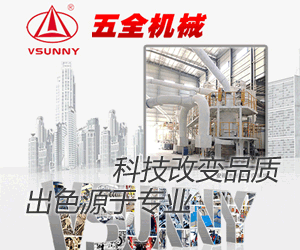Raymond mill is a kind of grinding equipment widely used in ore, chemical industry, building materials, metallurgy, electric power, medicine, food and other industries. The working principle is to use the relative motion between the roller and the grinding ring to apply pressure to the material through the roller, so as to achieve the purpose of crushing the material. The adjustment of the tuyere has a crucial impact on the performance of the Raymond mill, which is directly related to the grinding efficiency, product finness and energy consumption.
The importance of tuyere regulation
The size of the tuyere determines the wind speed and air volume inside the mill, which in turn affects the suspension and separation efficiency of the material. If the tuyere is too small, it will lead to insufficient wind speed inside the mill, the material can not be effectively suspended, the grinding efficiency is reduced, and it is easy to cause the wear of the grinding roller and the grinding ring to intensify. On the contrary, if the tuyere is too large, it may lead to the material being taken out of the grinding area too quickly, affecting the fineness of the product, increasing energy consumption, and may cause turbulence in the air flow inside the mill, affecting the stable operation of the mill.
The basic principle of tuyere regulation
When adjusting the size of the tuyere, follow the following basic principles:
Adjust according to material characteristics: the hardness, humidity, particle size and other characteristics of different materials are different, and the demand for air volume is also different. For example, materials with greater humidity require greater air volume to help dry, while materials with greater hardness require less air volume to avoid excessive wear.
Adjust according to product fineness requirements: the higher the product fineness requirements, the smaller the air volume is usually required to ensure that the material is fully ground in the grinding area. On the contrary, if the fineness requirement is not high, the air volume can be appropriately increased to increase the output.
Adjust according to the operating condition of the mill: During the operation of the mill, the operating condition of the mill should be closely observed, such as the vibration, noise, wear of the mill roller and the mill ring, etc., and the size of the tuyere should be adjusted according to the actual situation.
The specific operation of tuyere adjustment
Preparation before starting the mill: Before starting the mill, ensure that the feed port, discharge port and tuyere of the mill are not blocked, and the supply of materials and the exhaust system of the mill are normal.
Initial adjustment: After starting the mill, adjust the tuyere to a medium position to observe the operating condition of the mill and the fineness of the product. If it is found that the fineness of the product does not meet the requirements, or the operation of the mill is unstable, it is necessary to further adjust the tuyere.
Gradual fine-tuning: the adjustment of the tuyere should be carried out gradually, and a period of time should be observed after each adjustment to ensure the adjustment effect. Avoid large one-time adjustment of the tuyere, so as not to impact the operation of the mill.
Comprehensive consideration of other factors: While adjusting the tuyere, other operating parameters of the mill should also be considered, such as the pressure of the mill roller, the height of the mill ring, etc., to ensure that the overall operation of the mill is in the best state.
Tuyere adjustment precautions
Safety first: When adjusting the tuyere, ensure that the mill has completely stopped running and disconnect the power supply to prevent accidents.
Regular inspection: The adjustment of the tuyere is not a one-off, and should be checked and adjusted regularly according to the changes in material characteristics and product requirements.
Professional operation: The adjustment of the tuyere requires professional knowledge and experience, and it is recommended that professionals operate and adjust it.
Through the above detailed analysis of the tuyere adjustment of Raymond mill, we can see that the adjustment of tuyere is a process that requires comprehensive consideration of a variety of factors and gradual fine-tuning. The correct adjustment method can not only improve the grinding efficiency, but also ensure the quality of the product, while reducing energy consumption, extend the service life of the equipment, I hope that this information can help you better understand and master the adjustment skills of Raymond mill tuyere.
If you have any interest or other inquiries, please contact me on WhatsApp: 13677868426
 184
184
 0
0- 1电池材料表征实践指南
- 2聚合物加工测试分析指南
- 3散量秤彩页
- 4颗粒毛重秤彩页
- 5电子舌在牙膏质量控制和研发的应用
- 6高分辨ICP-OES 助力分析钕铁硼永磁材料
- 7川源科技粉末压实密度测试仪技术及应用分析
- 8川源科技-膨胀力测试方案

- 为什么ZIF-67的最新研究进展值得关注?
- 经典介孔分子筛SBA-15又有新进展!
- 利用蜂鸟声共振技术对穿心莲内酯纳米混悬剂的开发、表征和分子动力学模拟
- 为什么核壳复合纳米材料的研究进展值得关注?
- TiZrHfNbMo 难熔高熵合金等离子体氢化及力学性能
- 《MSEA》重磅:增材制造7075铝合金,世界级难题有了新解法
- 为什么氮掺杂石墨烯的最新进展值得关注?
- 汽车一体化发光智能前脸设计难点
- Development, Characterization, and Molecular Dynamics Simulation of Andrographolide Nanosuspensions Utilizing Hummer Acoustic Resonance Technology
- 苏州碳丰科技首席科学家程金生老师以本公司名义在国际上发表关于石墨烯纤维的论文《石墨烯纤维纳米复合材料的合成及氨基酸检测的分析应用》:
- 介可视·散装物料库存管理雷达全景扫描系统在料仓、堆场中的应用
- 磷酸化修饰鬼臼果多糖的制备及生物活性
- DSR论文解读:Advanced Science News 报道中科院长春应化所新型非铂催化材料研究成果
- High-throughput preparation, scale up and solidification of andrographolide nanosuspension using hummer acoustic resonance technology(纳米混悬剂制备的前瞻性技术 - 蜂鸟声共振)
- 扫描电镜优秀论文赏析|飞纳台式扫描电镜电极材料上的应用
- 扫描电镜论文赏析-干旱影响杨树叶片及次生木质部发育的分子机制


